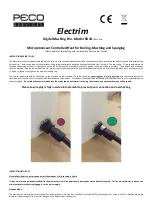
Code
Description
1
SCRATCH_WRT_FAIL
2
SCRATCH_ERASE_FAIL
3
DATA_BUFFER_OVERFLOW
4
ADC0_BUFFER_OVERFLOW
5
FUNCTION_INVALID
6
SWDT_TIME_INVALID
7
XBR_CONFIG_ERROR
16
FLASH_WRITE_FAIL
17
FLASH_ERASE_FAIL
18
FLASH_JMP_FAIL
19
FLASH_PSP_TIMEOUT
20
FLASH_ABORT_RECEIVED
21
FLASH_PAGE_MISMATCH
22
FLASH_BLOCK_MISMATCH
23
FLASH_PAGE_NOT_IN_CODE_AREA
24
MEM_ILLEGAL_ADDRESS
25
FLASH_LOCKED
26
INVALID_BLOCK
27
FLASH_ILLEGAL_PAGE
28
FLASH_TOO_MANY_BYTES
29
FLASH_INVALID_STRING_NUM
40
SHT1x_COMM_TIME_OUT
41
SHT1x_NO_ACK
42
SHT1x_CRC_FAILED
43
SHT1X_TOO_MANY_W_BYTES
44
SHT1X_TOO_MANY_R_BYTES
45
SHT1X_INVALID_MODE
46
SHT1X_INVALID_LINE
48
STREAM_IS_ACTIVE
49
STREAM_TABLE_INVALID
50
STREAM_CONFIG_INVALID
51
STREAM_BAD_TRIGGER_SOURCE
52
STREAM_NOT_RUNNING
53
STREAM_INVALID_TRIGGER
54
STREAM_ADC0_BUFFER_OVERFLOW
55
STREAM_SCAN_OVERLAP
56
STREAM_SAMPLE_NUM_INVALID
57
STREAM_BIPOLAR_GAIN_INVALID
58
STREAM_SCAN_RATE_INVALID
59
STREAM_AUTORECOVER_ACTIVE
60
STREAM_AUTORECOVER_REPORT
63
STREAM_AUTORECOVER_OVERFLOW
64
TIMER_INVALID_MODE
65
TIMER_QUADRATURE_AB_ERROR
66
TIMER_QUAD_PULSE_SEQUENCE
67
TIMER_BAD_CLOCK_SOURCE
68
TIMER_STREAM_ACTIVE
69
TIMER_PWMSTOP_MODULE_ERROR
70
TIMER_SEQUENCE_ERROR
71
TIMER_LINE_SEQUENCE_ERROR
72
TIMER_SHARING_ERROR
80
EXT_OSC_NOT_STABLE
81
INVALID_POWER_SETTING
82
PLL_NOT_LOCKED
96
INVALID_PIN
97
PIN_CONFIGURED_FOR_ANALOG
98
PIN_CONFIGURED_FOR_DIGITAL
99
IOTYPE_SYNCH_ERROR
100
INVALID_OFFSET
101
IOTYPE_NOT_VALID
102
TC_PIN_OFFSET_MUST_BE_4-8
112
UART_TIMEOUT
113
UART_NOT_CONNECTED
114
UART_NOT_ENABLED
5.4 - Calibration Constants
This information is only needed when using low-level functions and other ways of getting binary readings. Readings in volts already
have the calibration constants applied. The UD driver, for example, normally returns voltage readings unless binary readings are
specifically requested.
Calibration Constant
The majority of the U3's analog interface functions return or require binary values. Converting between binary and voltages
requires the use of calibration constants and formulas.
When using ModBus the U3 will apply calibration automatically, so voltages are sent to and read from the U3, formatted as a float.
Which Constants Should I Use?
The calibration constants stored on the U3 can be categorized as follows:
Analog Input
Analog Output
Internal Temperature
Analog Input: Since the U3 uses multiplexed channels connected to a single analog-to-digital converter (ADC), all low-voltage
channels have the same calibration for a given configuration. High-voltage channels have individual scaling circuitry out front, and
thus the calibration is unique for each channel. The table below shows where the various calibration values are stored in the Mem
area. Generally when communication is initiated with the U3, four calls will be made to the ReadMem function to retrieve the first 4
blocks of memory. This information can then be used to convert all analog input readings to voltages. Again, the high level
Windows DLL (LabJackUD) does this automatically.
Analog Output: Only two calibrations are provided, one for DAC0 and one for DAC1.
Internal Temperature: This calibration is applied to the bits of a reading from channel 30 (internal temp).
U3 Input Ranges
The U3 input ranges can be found in section 2.6.2 of the User's Guide. For your convenience, that table has been provided again
below.
59






































